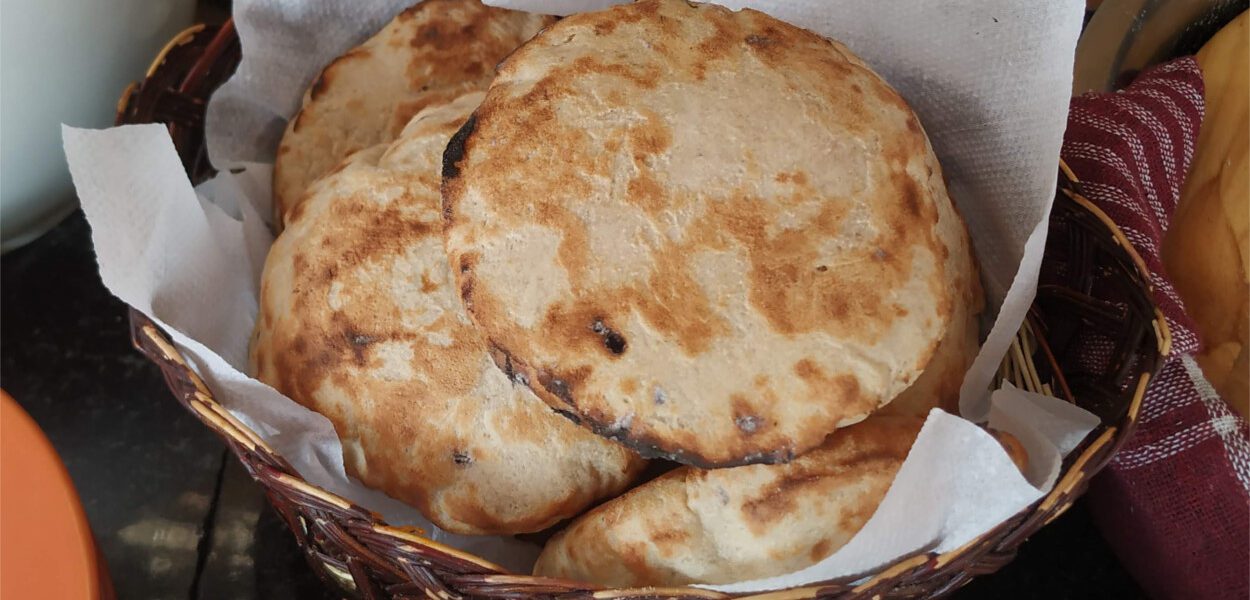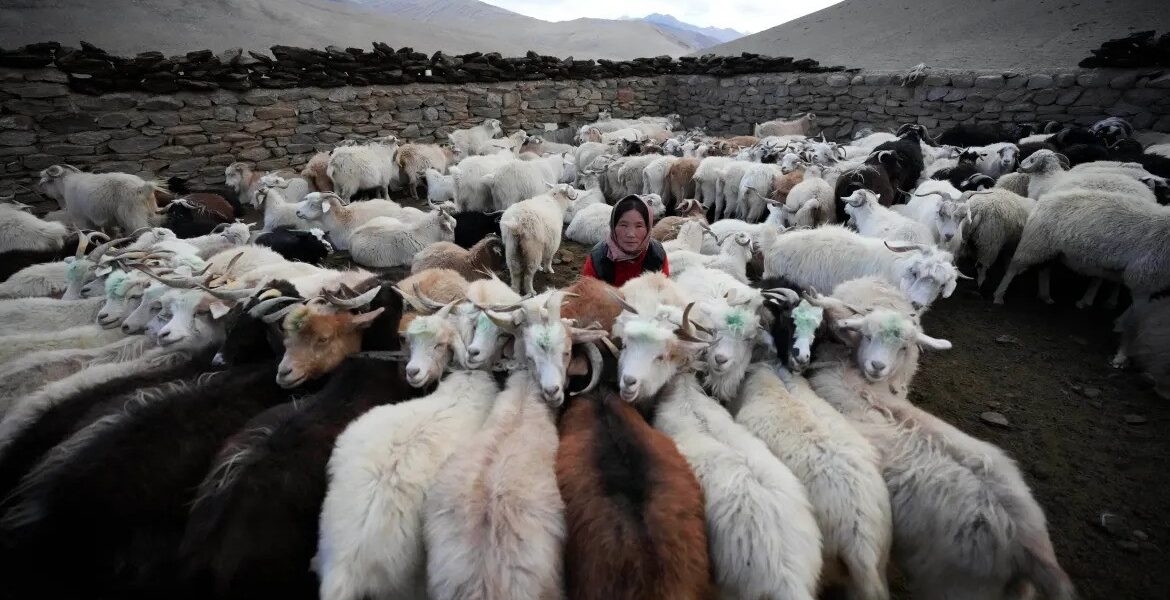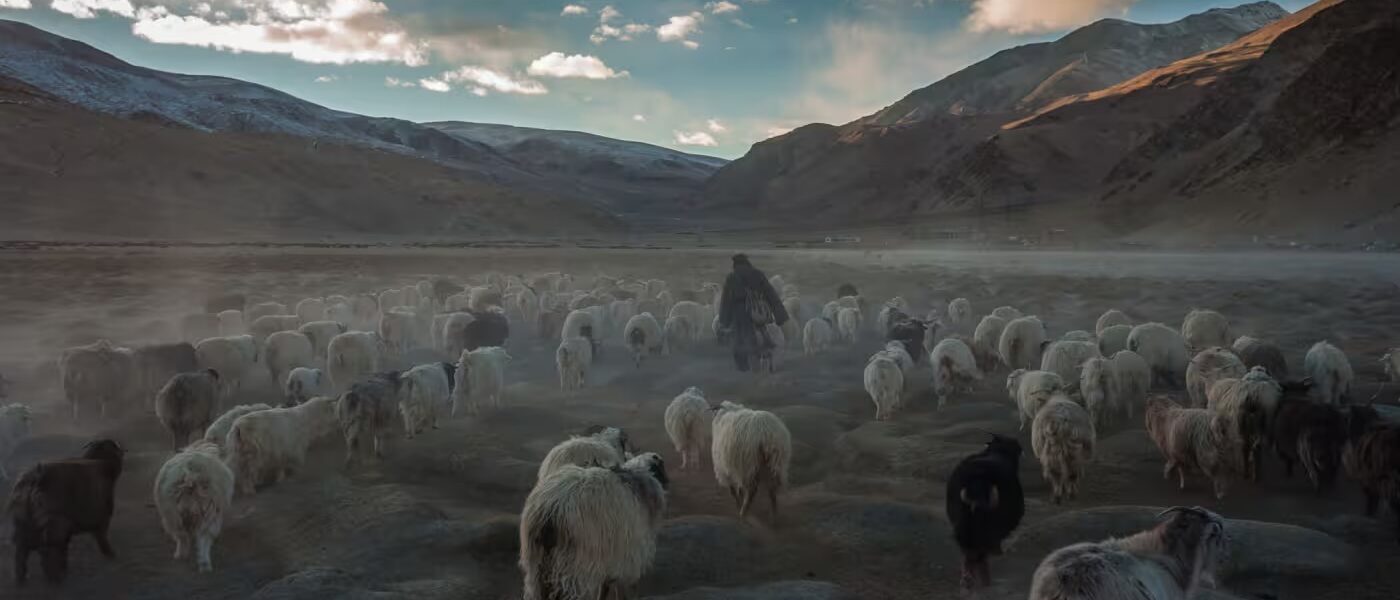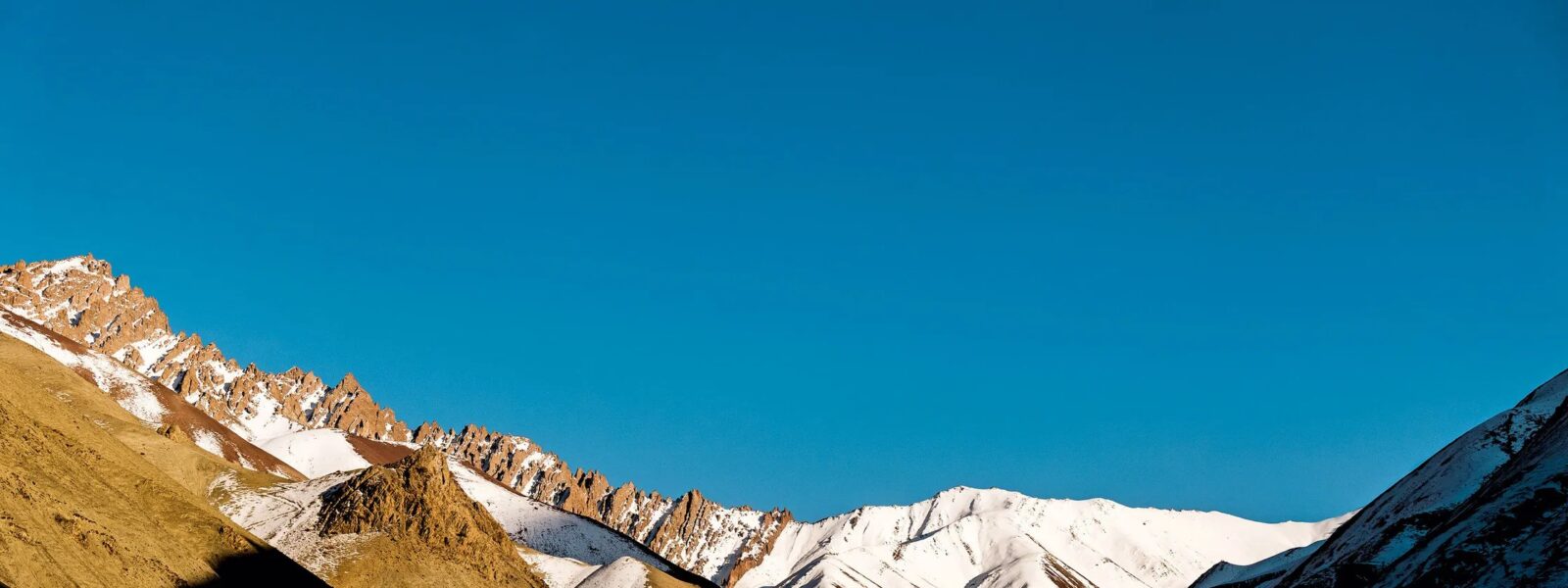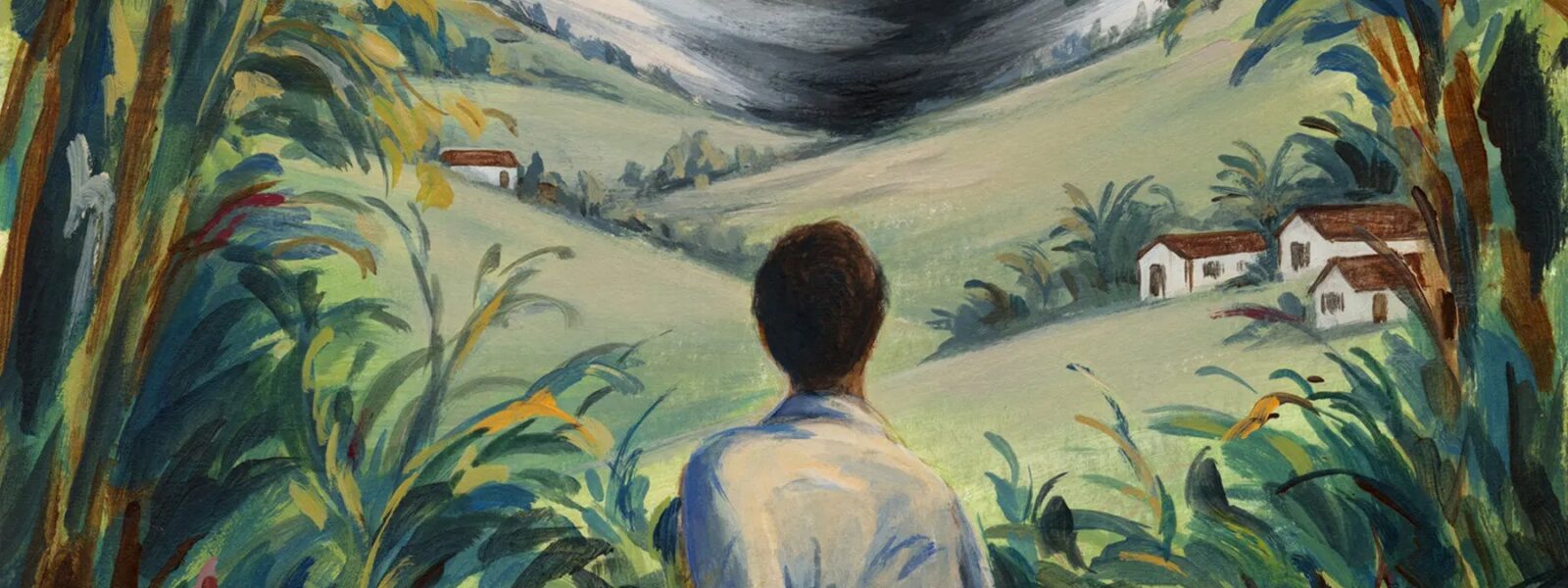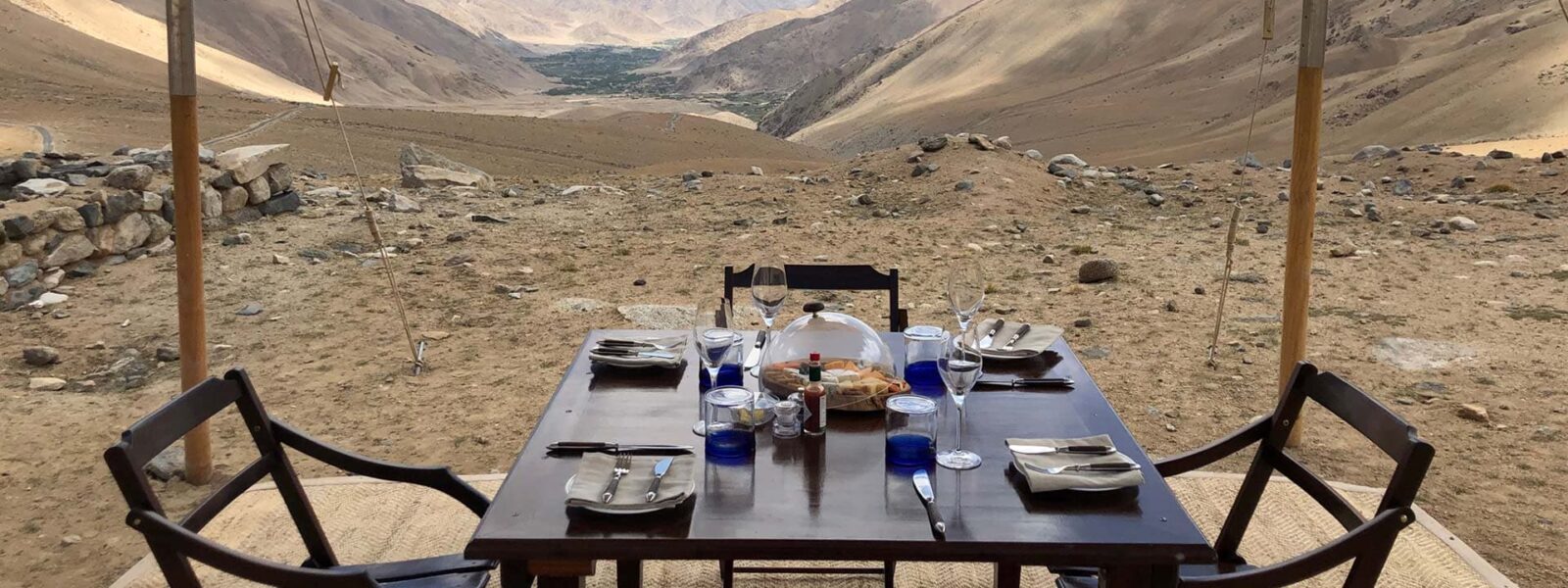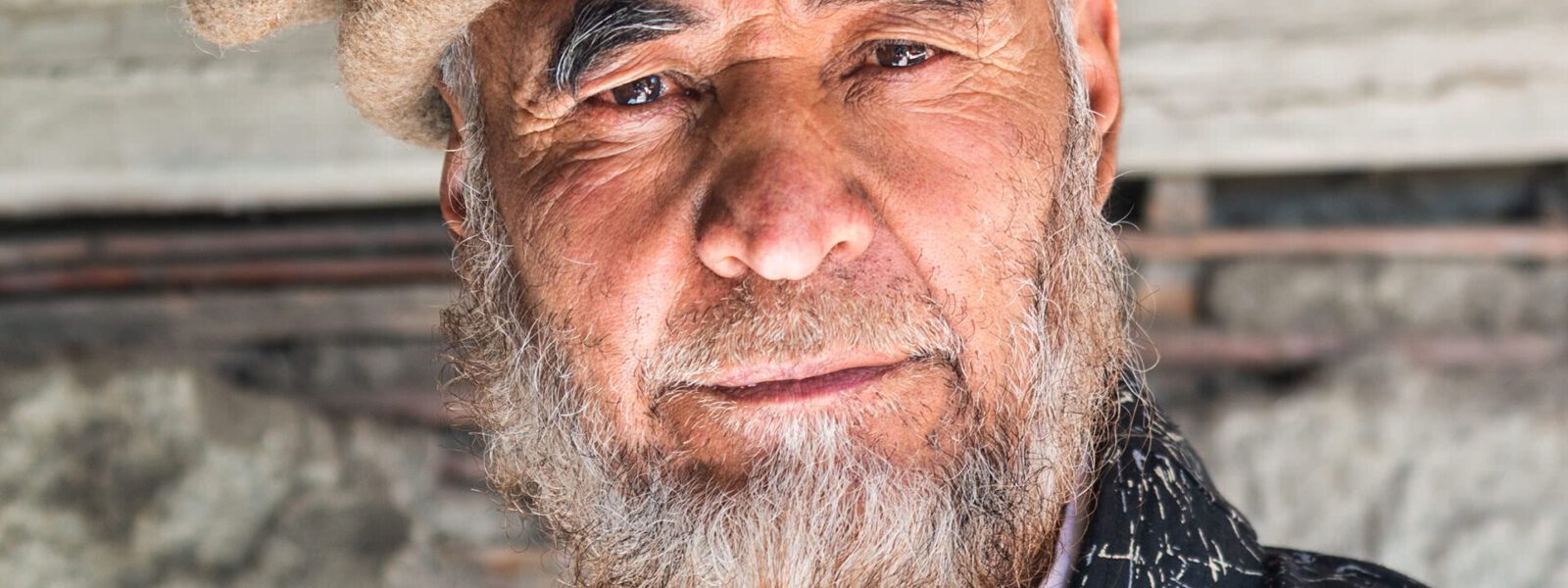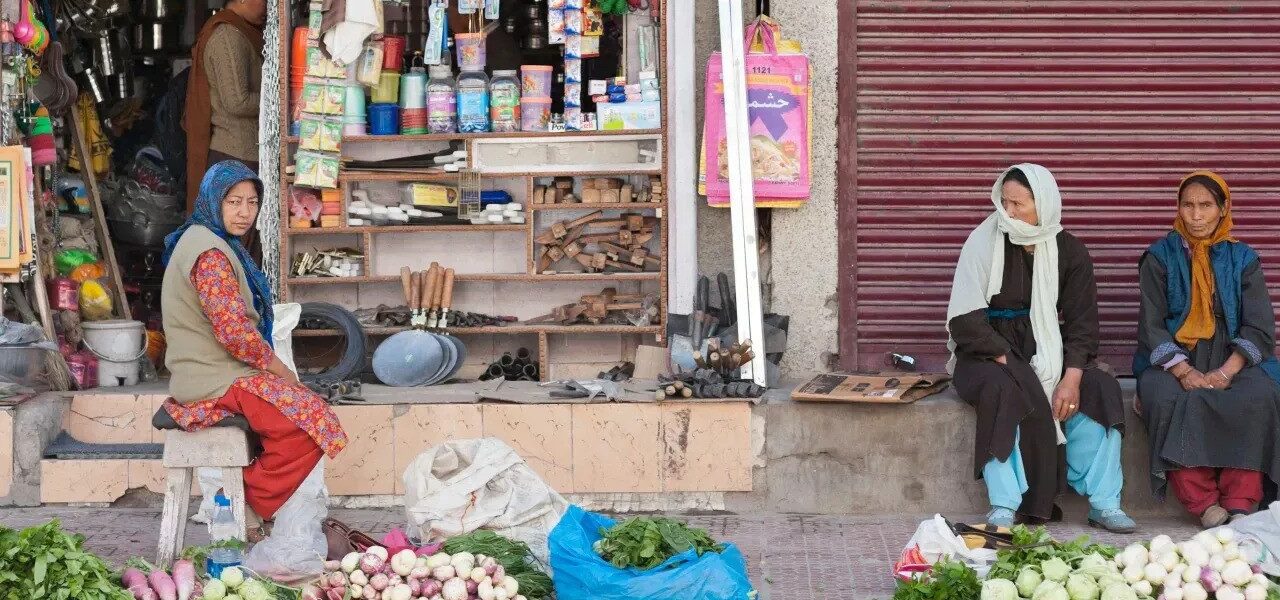A Morning in the Mountains of Ladakh
Imagine waking up to the soft, golden light filtering through a tiny window framed with handwoven curtains. Outside, the majestic peaks of Ladakh stand tall, their snowy crowns glowing under the first kiss of dawn. In the crisp, silent air, the faint scent of wood smoke dances—an ancient signal that the village is already stirring to life.
Stepping outside, the world feels both vast and intimate. The rugged stone paths, the mud-brick houses clinging to the hillside, and the endless sky above—all of it wraps you in a serene, otherworldly embrace. You watch as thin tendrils of smoke rise from every rooftop, twisting against the pale blue sky. Somewhere nearby, a dog barks lazily, and the faint clatter of metal hints at breakfast preparations.
It is here, in this remote Himalayan corner of the world, that you find the heart of Ladakhi life: the kitchen. Every home boasts a traditional stove, known locally as a Thap Oven, a humble yet ingenious invention that has kept families warm and nourished for generations. The Thap Oven is more than just a tool—it is a symbol of survival, community, and tradition in a land where winter can be relentless.
Today, I am invited into one such kitchen, drawn in by the rhythmic sound of firewood crackling and the irresistible aroma of fresh dough. My hostess, Sonam, with cheeks reddened by years of mountain air, smiles warmly as she fans the flames. On top of the sturdy, iron plate of the Thap Oven, she is preparing something truly special: Ladakhi Khambir Bread.
Unlike the breads I have tasted elsewhere, Khambir is uniquely Ladakhi—thick, slightly chewy, and imbued with the subtle smokiness of the wood fire. It is the kind of bread that tells a story with each bite, a story of resilience, simplicity, and the rich cultural tapestry woven into every Ladakhi home.
As Sonam kneads the dough, she shares tales of harsh winters and festive gatherings, of how bread like Khambir has always been at the center of village life. Here, bread is not just sustenance; it is a celebration of life itself.
The mountains outside seem to listen in quiet approval as the fire grows stronger, and the kitchen fills with a comforting heat. Soon, it will be my turn to try my hand at baking this traditional treasure, using nothing but flour, water, salt—and the timeless wisdom of Ladakh.
This is not just a recipe we are about to explore. It is an invitation into a way of life, a chance to taste the spirit of Ladakh with our own hands and hearts.

The Heart of a Ladakhi Kitchen: Understanding the Thap Oven
Step into any traditional home in Ladakh, and you will quickly discover that the true center of life is not the living room, but the kitchen. Here, amid sturdy stone walls and colorful handwoven carpets, stands a proud and indispensable companion to every household: the Thap Oven.
At first glance, a Thap Oven might appear modest—nothing more than a boxy, iron structure with a metal plate on top and a thin chimney stretching upward like a beckoning finger. Yet behind its simple appearance lies a design perfected over centuries, perfectly suited to the demands of high-altitude living.
The Thap Oven is a masterpiece of functionality. Crafted from iron or steel, it is fueled by local resources: firewood, dried brush, and often the traditional dung fuel, known locally as dongma. Inside, the fire is built directly in a small combustion chamber. As flames grow, heat spreads evenly across the thick metal plate on top, transforming it into a naturally radiant cooking surface. There are no dials, no fancy settings—just the pure, primal artistry of fire meeting metal.
In the harsh winters of Ladakh, where temperatures often plummet far below freezing, the Thap Oven serves a dual purpose. It not only cooks meals but also heats the home, gathering families around its warmth like a gentle hearth in the middle of an icy desert. The sight of children huddled around the stove doing homework, grandmothers simmering butter tea, and mothers kneading dough for Khambir bread is a scene as timeless as the mountains themselves.
Using a Thap Oven is a lesson in patience and intuition. Unlike modern appliances that beep and buzz with precision, here one must learn to read the behavior of the fire, to sense the heat of the iron by a careful touch or a practiced glance. Villagers teach their children from a young age how to control the blaze, adding kindling with a tender wisdom passed down like a precious heirloom.
In many ways, the Thap Oven is more than a kitchen appliance—it is a storyteller. It speaks of the resilience of a people who have learned to thrive in one of the world’s most unforgiving climates. It echoes with the laughter of family gatherings, the solemnity of long winters, and the comforting smells of home-cooked meals that seep into the very stones of the house.
As we prepare to bake our own Ladakhi Khambir Bread, understanding the Thap Oven is not just technical knowledge. It is an initiation into the very heart of Ladakh itself—a place where survival, hospitality, and tradition are baked together into every loaf and every life.

A Slice of Ladakh: The Story of Khambir Bread
In every culture, there are foods that carry the weight of history, tradition, and memory within their modest forms. In Ladakh, one such treasure is Khambir bread—a humble, thick, slightly leavened round of bread that holds a beloved place at the center of daily life.
Khambir is not just a meal; it is a living testament to the Ladakhi spirit. In a land where fields are scarce, and seasons are short, creating a bread that is both hearty and simple was not merely a culinary decision, but a necessity. Using only basic ingredients—wheat flour, water, salt, and a touch of natural fermentation—Khambir emerged as a food designed to nourish families through the most brutal winters.
What makes Khambir unique is its resilience, much like the people who bake it. Its slightly chewy texture, thick crust, and smoky undertones from the wood-fired Thap Oven distinguish it from the lighter breads of the plains below. It is a bread that sustains, that fills the stomach and warms the heart.
Traditionally, baking Khambir was—and still is—a communal event. Villages come alive with the familiar scent of dough meeting hot iron, and families gather around to share the work. Elder women teach the young, not through written recipes, but through touch, instinct, and repetition. Watching a Ladakhi grandmother shape Khambir is to witness an art form passed gently from one generation to the next.
Khambir also occupies a special place in Ladakhi ceremonies and festivals. During Losar, the Tibetan New Year, and other important celebrations, special versions of Khambir adorned with butter or curd are prepared and shared among neighbors. In moments of joy, in times of mourning, or simply in the daily rhythm of life, Khambir is ever-present—a reliable, grounding force that brings people together.
Tearing into a freshly baked Khambir reveals a dense, warm center with an inviting aroma of earth and fire. It pairs beautifully with bowls of rich butter tea or spicy lentil soup, creating a meal that is deceptively simple yet profoundly satisfying. In every bite, you taste the perseverance, the creativity, and the communal strength that define Ladakh.
As we prepare to bake our own authentic Ladakhi Khambir bread, it’s important to remember: this is not just about following a recipe. It’s about stepping into a tradition where bread is not merely food, but a celebration of life against the odds—a thick, hearty slice of Ladakh’s soul.
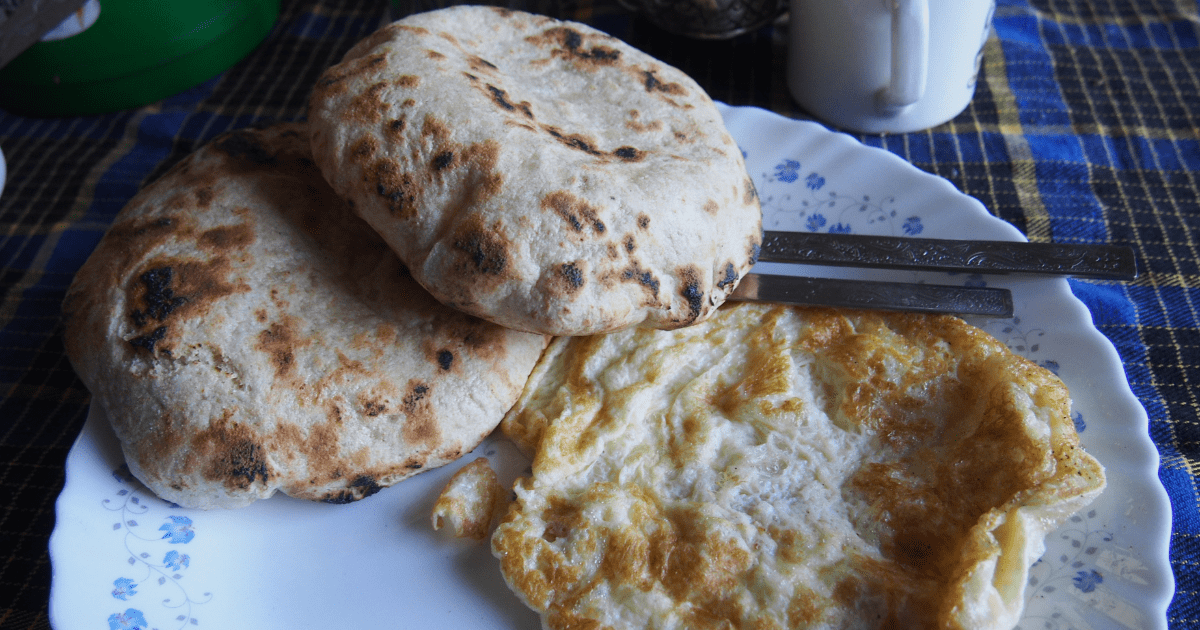
Gathering Ingredients: Simple and Wholesome
One of the most charming aspects of Ladakhi cooking is its reliance on simplicity. In a place where the earth is stubborn and the growing season is fleeting, the recipes handed down through generations have been shaped by necessity, wisdom, and an honest relationship with the land. Khambir bread is a perfect example of this culinary philosophy—born from a handful of humble ingredients and a great deal of heart.
Walking through the small markets of Leh or even the tiniest village outposts, you quickly realize that ingredients here are not chosen for extravagance but for resilience. Flour, salt, water, and a natural starter—these are the pillars upon which traditional Khambir bread is built. There is no need for fancy additives, exotic spices, or specialized flours. What matters most is freshness, balance, and the experienced hands that bring it all together.
The wheat used in Ladakh has a character of its own. Grown in small, terraced fields, it carries the strength of high altitudes and sharp, clear sunshine. Ladakhi wheat produces a flour that is slightly coarser and heartier than what many travelers might be accustomed to, lending Khambir its distinctive chew and depth.
Salt, too, plays a subtle but essential role. In a landlocked region where trade routes once dictated survival, salt was once a precious commodity carried on the backs of yaks over treacherous passes. Today, it remains a quiet nod to the history of endurance and connection beyond the mountains.
Water, that most elemental of ingredients, has its own magic here. Sourced from glacier-fed streams, it is pure, cold, and mineral-rich—perfect for nurturing a living dough. Some families still maintain a cherished natural starter, passed down like a family heirloom, to begin the fermentation process, infusing each loaf with a unique local character.
As Sonam, my gracious host, gathers the ingredients from her modest pantry, there is a sense of ceremony in the air. She moves with careful intent, treating each element with respect. For her, this is not merely baking—it is an act of preservation, a continuation of a rhythm that has pulsed through Ladakhi kitchens for centuries.
Watching her, I am struck by how these simple ingredients, when combined with knowledge, patience, and a well-tended Thap Oven, can create something far greater than the sum of their parts. There is a lesson here, whispered quietly in the language of flour-dusted hands and softly crackling fires: that true richness lies not in abundance, but in gratitude and care.
As we mix the flour and water together in a large wooden bowl, I can almost feel the stories that live in this dough—the countless mornings, the countless winters it has sustained. We are not just making bread; we are participating in an unbroken chain of tradition, one that binds the present to the past with each deliberate stir.
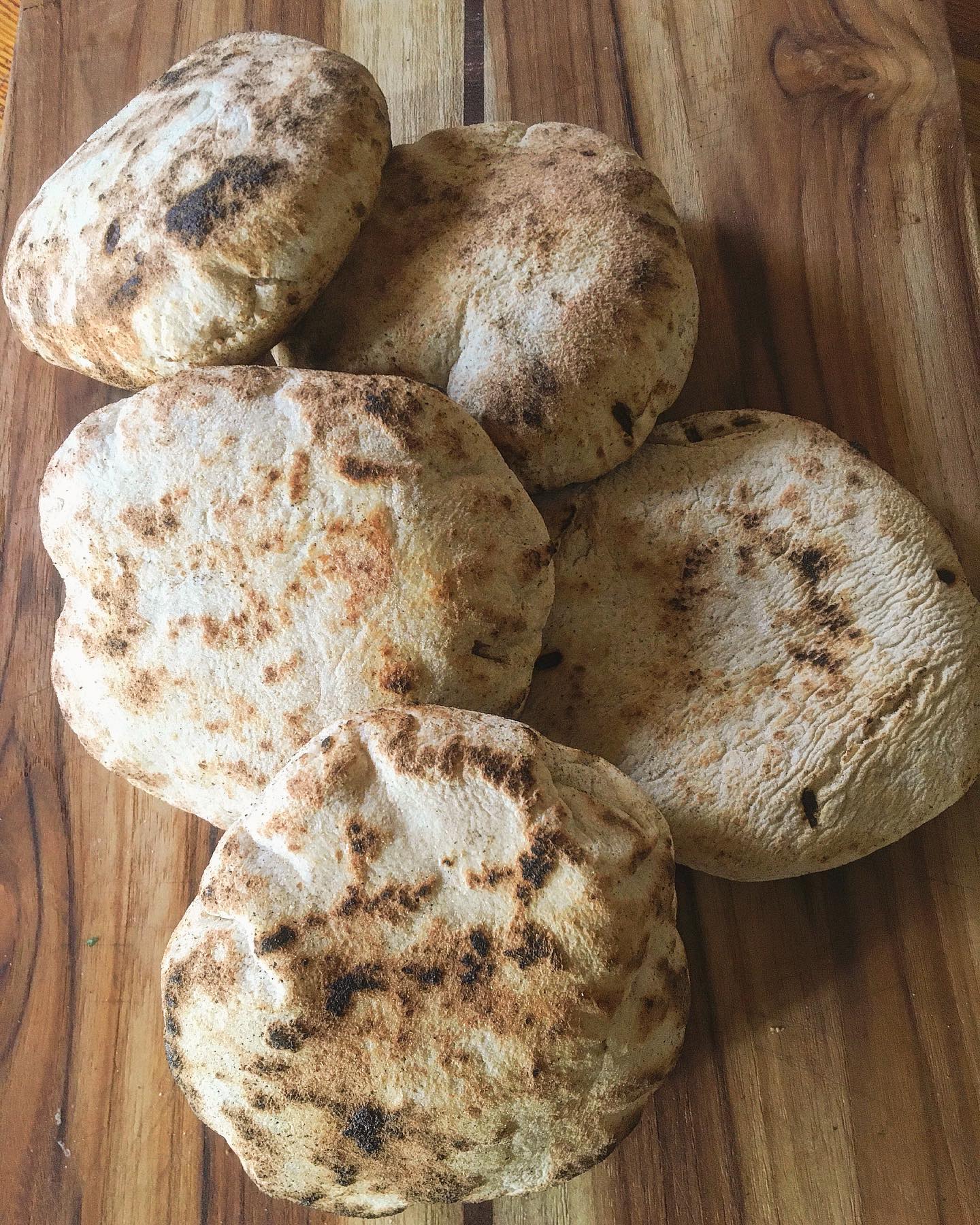
How to Bake Ladakhi Khambir Bread: Step-by-Step Guide
The moment has arrived. The fire is glowing steadily inside the Thap Oven, the iron plate above is hot to the touch, and the dough we prepared earlier now rests under a cloth, plumped and alive with slow, patient fermentation. Baking Khambir bread in the traditional way is less about strict measurements and more about intuition—a dance between the dough, the fire, and the baker.
Step 1: Preparing the Dough
In a wide, sturdy bowl, mix three to four cups of Ladakhi wheat flour with a generous pinch of salt. Slowly add warm, glacier-fed water, a little at a time, kneading gently but firmly. Some families add a bit of natural starter from a previous batch, lending the dough a deeper flavor. The texture should be soft but not sticky—pliant enough to hold its shape.
Step 2: Letting it Rise
Once kneaded, cover the dough with a clean cloth and let it rise in a warm corner of the kitchen. In Ladakh’s cooler climate, this may take longer than you expect, but patience is essential. Good Khambir carries the subtle tang of a slow, natural fermentation. Allow at least two to three hours for the dough to double in size.
Step 3: Shaping the Bread
After rising, turn the dough out onto a lightly floured surface. Gently flatten it into a thick, round disc about one inch in height. Unlike the airy loaves of European bakeries, Khambir is hearty and dense—a bread meant to endure.
Step 4: Heating the Thap Oven
Before placing the dough on the oven, ensure the iron plate atop the Thap Oven is evenly heated. You should be able to sprinkle a few drops of water onto the surface and watch them dance and sizzle instantly. If the plate is too cool, the bread will dry out instead of baking properly.
Step 5: Baking the Khambir
Place the shaped dough directly onto the hot iron plate. After a few minutes, once the underside develops a crisp, golden crust, carefully flip it over. Some Ladakhis gently press the sides with a flat iron spatula, encouraging an even bake. The air fills with a rich, toasty aroma—the unmistakable scent of homemade Khambir bread.
Baking Tips:
– If the fire is too strong, the bread may scorch. Watch carefully and adjust by adding smaller pieces of wood.
– Rotate the bread a few times for a perfectly even color.
– Embrace a slight char on the surface—it adds a wonderful smokiness that is signature to true Ladakhi Khambir.
Step 6: The Final Touch
When both sides are golden and the bread sounds hollow when tapped, it’s ready. Remove it from the oven and wrap it briefly in a clean cloth to let it breathe and soften slightly.
There is something deeply satisfying about baking bread with nothing but fire, metal, and your own two hands. It strips the act of cooking down to its purest form. When you finally hold your own Khambir—warm, weighty, fragrant—you are not merely baking. You are participating in a timeless ritual, one that connects you to centuries of Ladakhi kitchens and the indomitable spirit of the mountains.
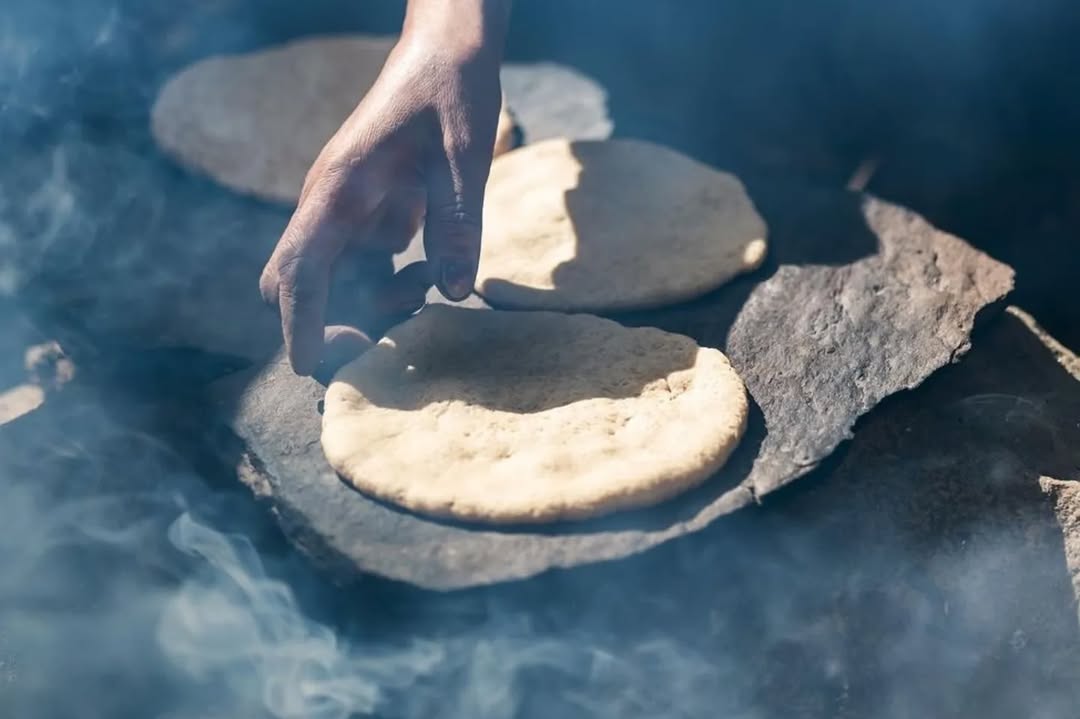
Warming Hands and Hearts: The First Bite
The moment the Khambir comes off the Thap Oven, it carries with it the story of fire, flour, and patience. Its crust is beautifully golden, with slight charred marks that hint at the dance it performed with the living flame. Holding the bread in my hands, I can feel the lingering heat—an invitation as old as humanity itself to break bread and share a moment of comfort.
Tearing open the thick, rustic loaf releases a gentle puff of steam, carrying the smoky scent of woodfire and the wholesome aroma of fresh-baked grain. The crumb inside is dense yet tender, with a slight chewiness that speaks to its hearty origins. The outside crackles under my fingers, promising a satisfying bite.
I sit cross-legged on a low woven mat beside Sonam and her family, cradling my warm slice of homemade Khambir bread. It is served simply, as tradition dictates: alongside a bowl of rich butter tea and a dish of fresh apricot jam. There is no need for elaborate presentation or gourmet embellishments. The bread, and the spirit behind it, are enough.
The first bite is revelatory. There is a primal satisfaction in tasting something so honest, so deeply connected to its place of origin. The slight smokiness of the crust blends with the earthy flavor of the Ladakhi wheat, while the salt lends a subtle depth. Dipped into the buttery, salty tea, the Khambir transforms—becoming both food and memory, a tangible link to the generations who have lived, loved, and labored in these mountains.
Around me, the kitchen hums with quiet joy. Children giggle between mouthfuls, elders nod approvingly, and Sonam watches me with a proud, knowing smile. In this small act of sharing a simple loaf of bread, a bond is formed—one that transcends language, geography, and culture.
Outside, the wind dances along the edges of the stone walls, but inside, the warmth of the oven and the bread keeps the chill at bay. It is a warmth that goes beyond temperature; it is the warmth of human connection, of tradition honored and extended, of finding a place at a table far from home.
Eating traditional Ladakhi Khambir is not about mere sustenance. It is about being welcomed into a story that is still being written every day in villages scattered across the high deserts of Ladakh. It is about recognizing the extraordinary richness that can be found in simplicity.
As I savor the final bites of my Khambir, I realize that this experience will linger far longer than any grand feast or five-star meal. It will remain tucked into the folds of memory—a soft, sturdy reminder that sometimes, the heart of a place can be found in something as humble, and as profound, as a piece of bread.
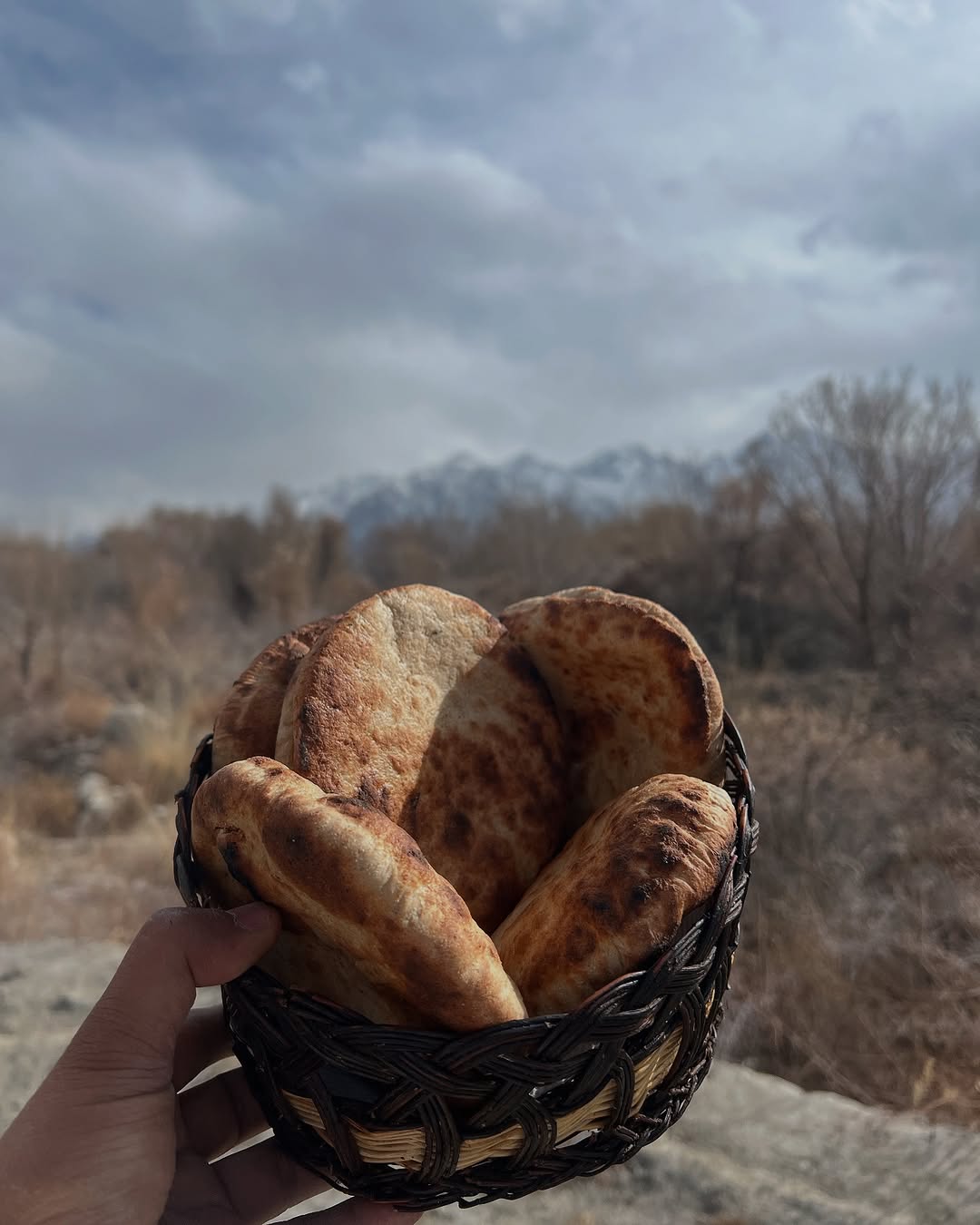
Why Baking Khambir is More Than Just Bread
In the soft afterglow of our shared meal, as the last embers in the Thap Oven fade into a warm, pulsing red, I begin to understand something deeper about what we have just created. Baking Khambir bread is not simply about mixing flour, salt, and water. It is not merely the application of heat or the satisfaction of a hungry stomach. It is an act of remembrance, of resilience, and of deep-rooted belonging.
In Ladakh, where the land demands humility and the seasons dictate the rhythm of life, every small act of creation carries profound meaning. Bread is not wasted here. It is cherished, revered even, because it represents survival against forces much larger than oneself—bitter winters, isolation, and scarcity. When a Ladakhi woman shapes a loaf of Khambir, she is echoing the hands of her mother, her grandmother, and countless ancestors who learned to coax nourishment from a landscape that offers little easily.
Baking Khambir is a meditation on patience. The slow rise of the dough mirrors the deliberate pace of life in the mountains. The careful tending of the fire requires a watchful eye and a steady hand, just as daily life demands attentiveness to the moods of the weather, the land, and the community. Nothing about the process is rushed, and therein lies its beauty.
It also embodies a profound connection to place. Every aspect—the coarse Ladakhi flour, the mineral-rich water, the crackling wood—carries the unmistakable fingerprint of this high-altitude desert. You cannot replicate true Khambir in a stainless-steel kitchen or an electric oven; its soul is intimately tied to the mountains, the stone houses, the ancient hearths, and the deep, slow heartbeat of Ladakh itself.
For those of us coming from faster, more restless corners of the world, baking and breaking Khambir offers an invitation to slow down, to reconnect with fundamental rhythms we often forget. It is a reminder that nourishment is not just physical—it is emotional, communal, and spiritual. It is about taking what little you have and transforming it into something that sustains not just the body, but the spirit.
As I sit surrounded by these quiet mountain people, listening to their laughter and feeling the lingering warmth of the Thap Oven on my face, I realize that in learning to bake Khambir, I have been offered a rare gift. It is a glimpse into a way of life where gratitude, resilience, and togetherness are baked into every loaf, and where even the simplest meal is a profound celebration of life.
And as I tuck these lessons into my heart, I know that wherever my journey takes me next, a part of me will always remain here—in the golden crust of Khambir, the smoky scent of firewood, and the timeless embrace of a Ladakhi kitchen.
Conclusion: Bringing a Taste of Ladakh to Your Home
As I bid farewell to the warm kitchen and step back into the crisp mountain air, I carry more than just a satisfied stomach. I carry a piece of Ladakh itself—a piece of its soul, its history, its quiet, enduring spirit. Baking Ladakhi Khambir bread in a traditional Thap Oven is more than a culinary adventure; it is an immersion into a way of life where simplicity and resilience are honored above all.
For those of you reading this from distant lands—from the rolling hills of Tuscany to the misty shores of Ireland, from the cobbled streets of Prague to the Alpine villages of Switzerland—know this: you do not need to scale Himalayan peaks to taste the magic of Ladakh. With a handful of simple ingredients, a bit of time, and a heart open to discovery, you can bring a slice of these mountains into your very own kitchen.
Start by gathering your flour, your salt, your water. Feel the dough come to life beneath your hands, just as generations of Ladakhi bakers have. Tend your fire, whether it is a wood stove, a heavy skillet, or even a humble oven, and honor the ritual of waiting, watching, and coaxing life into the simplest of foods. Let the scent of baking bread fill your home, and as you tear into that first warm, smoky loaf, let it carry you across continents—to a small stone house high above the Indus River, where the mountains touch the sky and the ovens are always burning.
In our hurried, restless world, there is a quiet revolution in returning to these elemental acts. Baking your own Khambir is not just about producing a loaf of bread—it is about choosing to reconnect with something fundamental and pure. It is a way to slow down, to nourish not only your body but also your sense of wonder, your patience, and your gratitude.
And when you share that bread with family and friends—breaking it open, dipping it into hearty stews, pairing it with cheese, honey, or simply savoring it plain—you are participating in something timeless. You are weaving your own story into the great, ongoing tapestry of human connection through food.
So go ahead. Light your fire, roll your dough, and bake your Khambir. In doing so, you will find that Ladakh is not just a distant place on a map. It lives in your hands, your kitchen, and your heart.
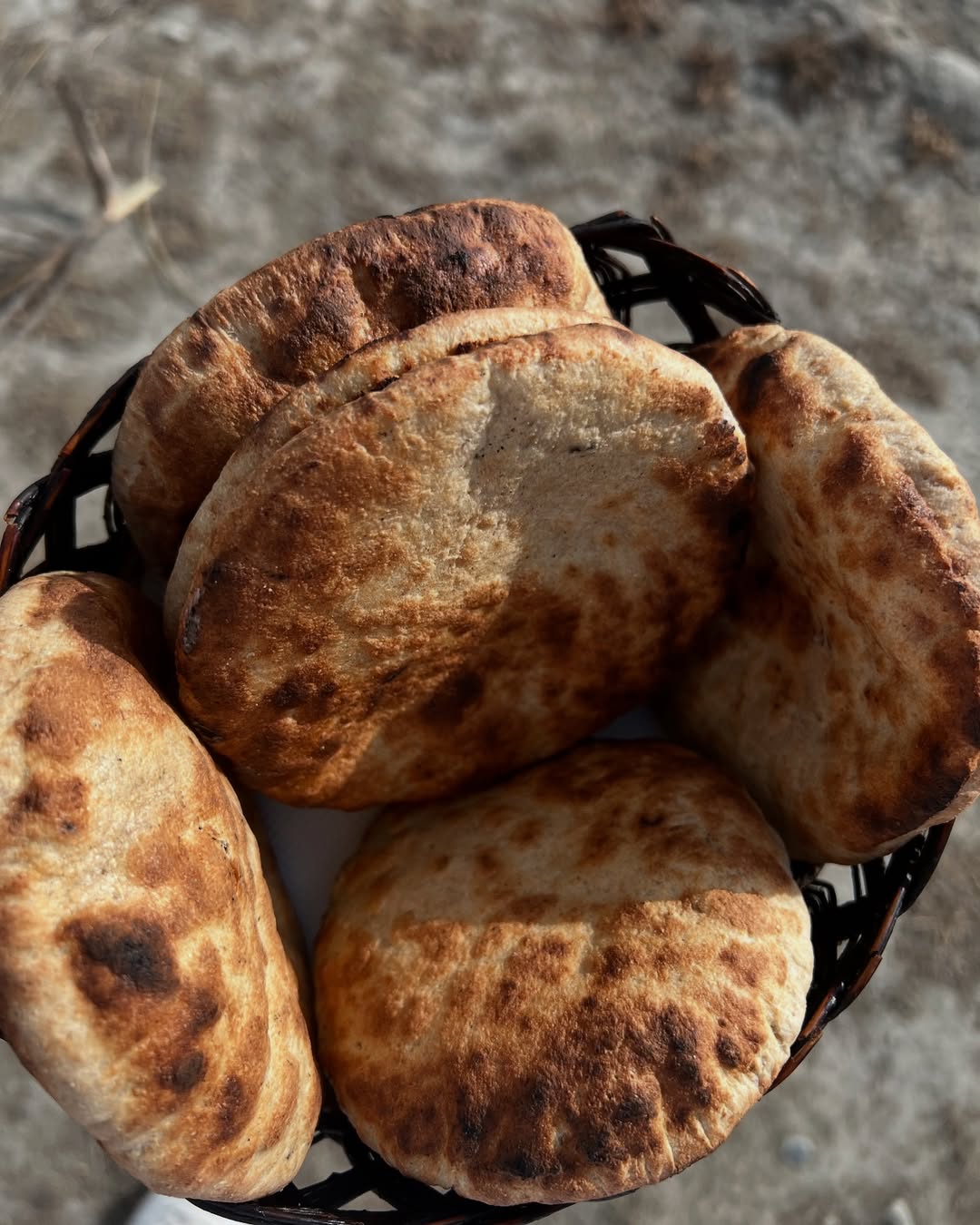
About the Author
Elena Marlowe is an Irish-born writer whose journey has carried her from the misty coasts of Ireland to the tranquil beauty of Lake Bled, Slovenia, where she now makes her home. Nestled in a quiet village surrounded by forests and mountains, Elena draws daily inspiration from the timeless rhythms of nature and the whispered stories of old-world Europe.
Her writing captures the spirit of slow, mindful travel and the profound connection between people, food, and place. With a deep love for cultural traditions and a keen eye for everyday beauty, Elena’s narratives invite readers to step off the beaten path and discover the heart of a destination through its kitchens, its crafts, and its quiet corners.
When she is not writing, Elena can often be found wandering winding trails, sipping strong coffee in sun-dappled courtyards, or sharing warm bread and stories with friends new and old. Her work aims to celebrate the extraordinary richness hidden within the simplest moments—and to remind us all that the world’s greatest journeys often begin with a single, heartfelt step.

